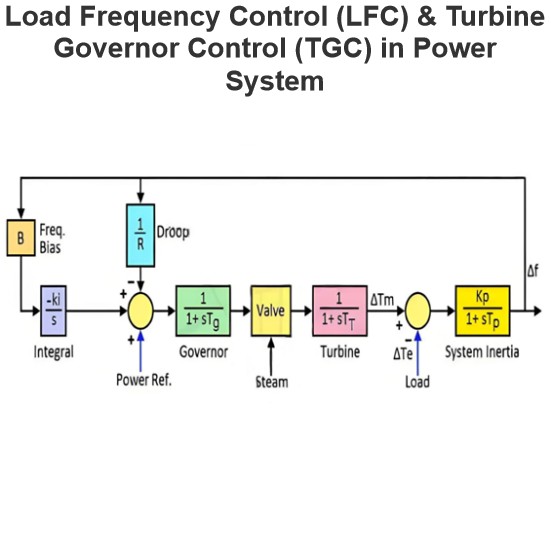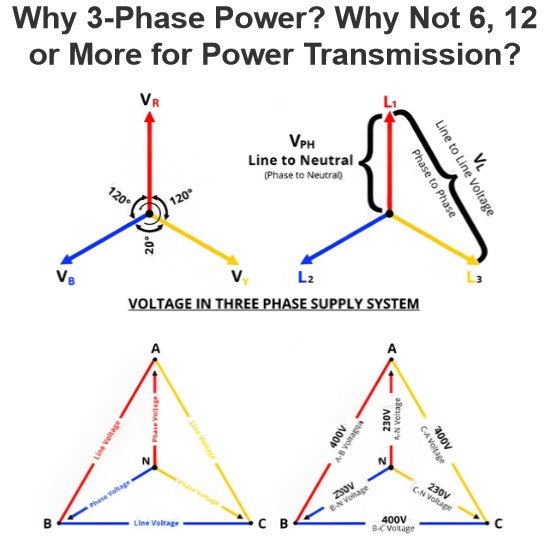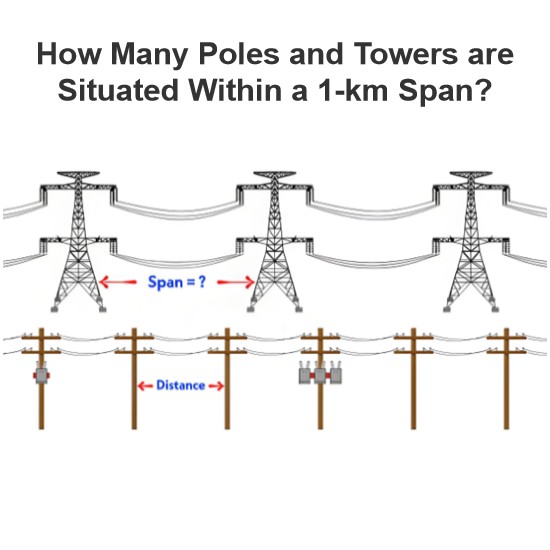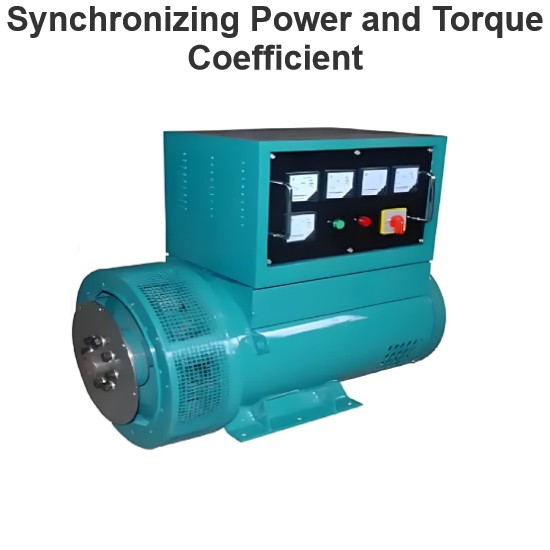Excitation System
Excitation System
Definition
An excitation system is a crucial component in synchronous machines, tasked with supplying the requisite field current to the rotor winding. Put simply, it is designed to generate magnetic flux by passing an electric current through the field winding. Key attributes that define an ideal excitation system include unwavering reliability across all operational scenarios, straightforward control mechanisms, ease of maintenance, stability, and a rapid transient response.
The magnitude of excitation demanded by a synchronous machine is contingent upon multiple factors, namely the load current, load power factor, and the machine's rotational speed. Larger load currents, lower speeds, and lagging power factors necessitate a higher level of excitation within the system.
In an excitation setup, each alternator typically has its own exciter, which functions as a generator. In a centralized excitation system, two or more exciters are employed to supply power to the bus - bar. While this centralized approach is cost - effective, a fault within the system can have a detrimental impact on the alternators operating within the power plant.
Types of Excitation System
The excitation system can be predominantly categorized into several types, with the following three being the most significant: DC Excitation System, AC Excitation System, and Static Excitation System. Additionally, there are sub - types such as Rotor Excitation System and Brushless Excitation System, which will be elaborated upon in detail below.
DC Excitation System
The DC excitation system comprises two exciters: a main exciter and a pilot exciter. An automatic voltage regulator (AVR) plays a pivotal role in this system by adjusting the output of the exciters. This adjustment is aimed at precisely controlling the output terminal voltage of the alternator. The input from a current transformer to the AVR serves as a safeguard, ensuring that the alternator current is limited during fault conditions.
When the field breaker is in the open position, a field discharge resistor is connected across the field winding. Given the highly inductive nature of the field winding, this resistor is essential for dissipating the stored energy, thereby protecting the system components from potential damage due to induced voltages.
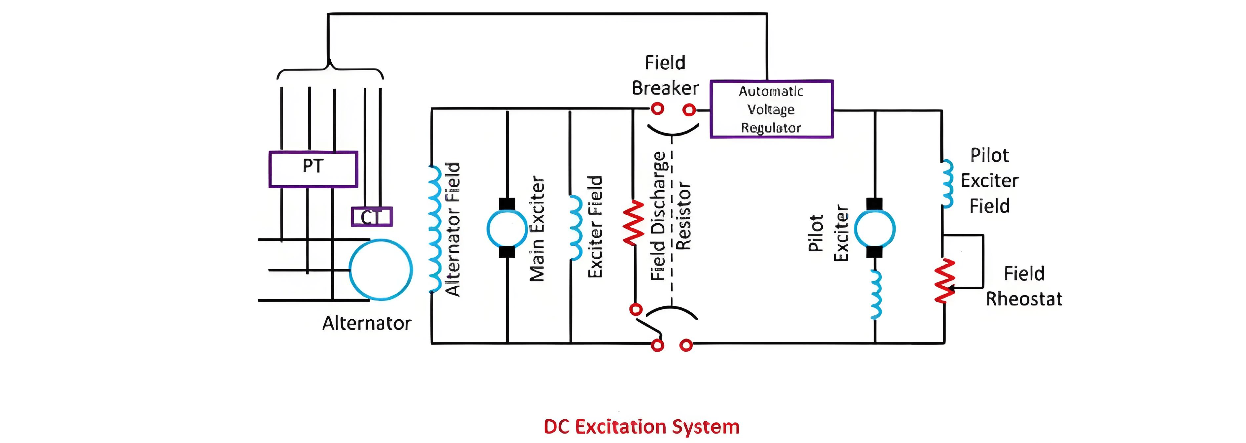
DC Excitation System (Continued)
Both the main and pilot exciters can be powered in two ways: either directly by the main shaft of the synchronous machine or independently by an external motor. Direct - driven exciters are often the preferred choice. This is because they maintain the integrity of the unit's operational system, ensuring that the excitation process remains unaffected by external disruptions.
The main exciter typically has a voltage rating of around 400 volts, and its capacity is approximately 0.5% of the alternator's capacity. In turbo - alternators, however, issues with the exciters are relatively common. The high rotational speeds of these machines contribute to increased wear and tear, making the exciters more prone to failure. To address this, separately motor - driven exciters are installed as standby units, ready to take over in case of any malfunction of the primary exciters.
AC Excitation System
The AC excitation system integrates an alternator and a thyristor rectifier bridge, both of which are directly coupled to the main alternator shaft. The main exciter within this system can operate in two modes: self - excitation, where it generates its own magnetic field to produce electrical output, or separate excitation, which relies on an external power source to initiate the excitation process. The AC excitation system can be further divided into two distinct categories, each with its own unique characteristics, which will be explored in greater detail below.
Rotating Thyristor Excitation System
As illustrated in the accompanying figure, the rotating thyristor excitation system features a clearly defined rotating section, demarcated by a dashed line. This system comprises an AC exciter, a stationary field, and a rotating armature. The output from the AC exciter undergoes rectification through a full - wave thyristor bridge rectifier circuit. This converted direct - current output is then supplied to the field winding of the main alternator, enabling the generation of the magnetic field necessary for the alternator's operation.
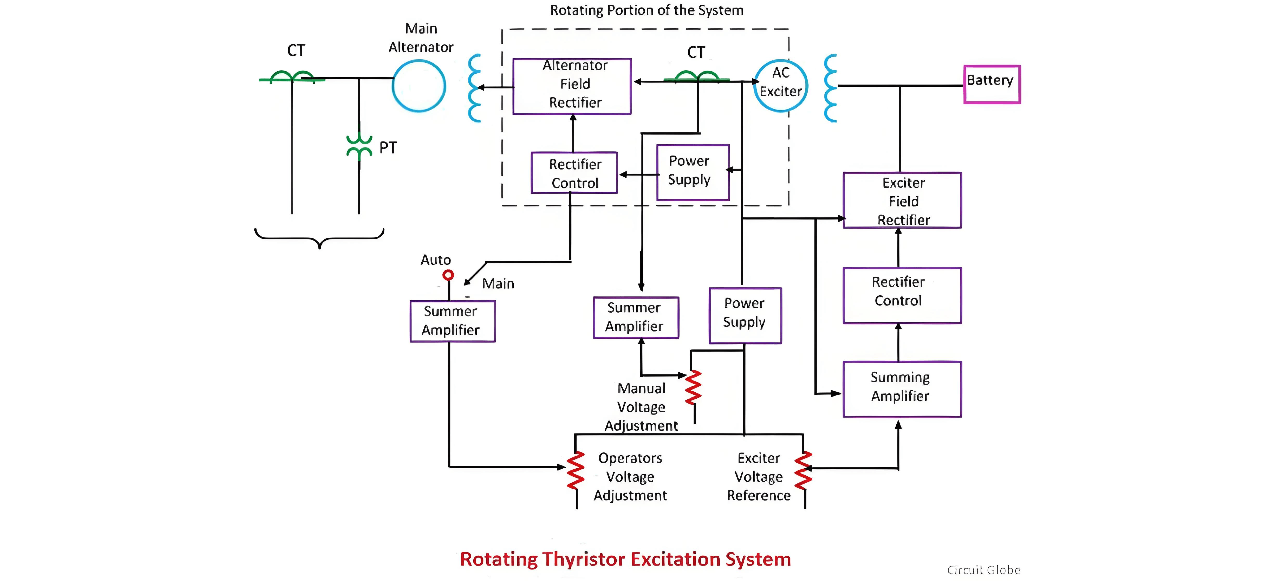
In the rotating thyristor excitation system, the alternator's field winding is also powered via an additional rectifier circuit. The exciter is able to establish its voltage by leveraging its residual magnetic flux. The power supply unit, in conjunction with the rectifier control mechanism, generates precisely controlled triggering signals. In the automatic operating mode, the alternator voltage signal is first averaged and then directly compared with the operator - set voltage adjustment value. Conversely, during the manual operating mode, the alternator's excitation current is compared against a separate, manually - adjusted voltage reference.
Brushless Excitation System
The brushless excitation system is depicted in the figure below, with its rotating components clearly encased within a dashed - line rectangle. This sophisticated system comprises an alternator, a rectifier, a main exciter, and a permanent magnet generator alternator. Both the main and pilot exciters are driven by the main shaft of the machine. The main exciter features a stationary field and a rotating armature. The output of the rotating armature is directly connected, through silicon rectifiers, to the field winding of the main alternator, ensuring a seamless and brush - free transfer of electrical power for excitation purposes.
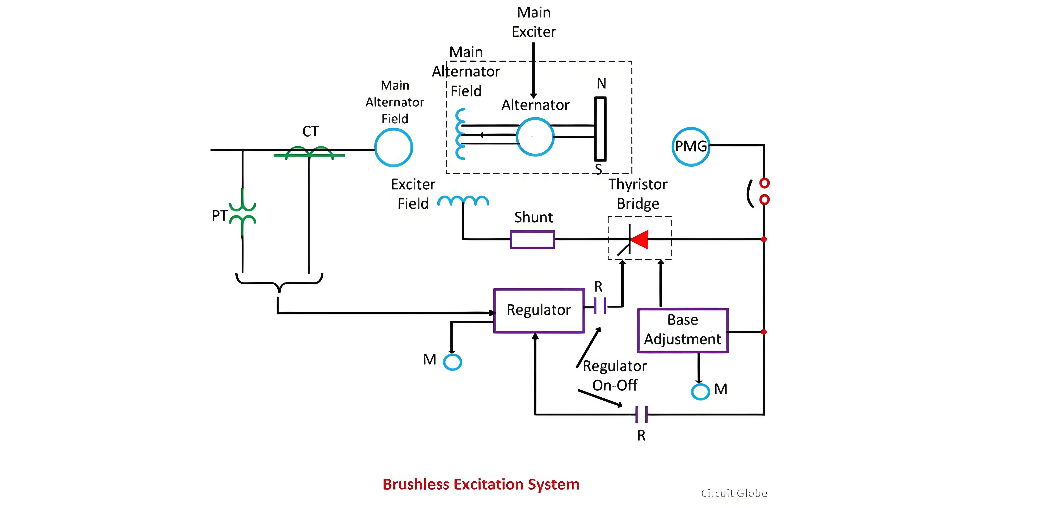
The pilot exciter is a shaft - driven permanent magnet generator. It features rotating permanent magnets affixed to the shaft and a three - phase stationary armature. This armature supplies power to the main exciter field via silicon rectifiers, ultimately contributing to the excitation of the main alternator. Additionally, in another configuration, the pilot exciter, still a shaft - driven permanent magnetic generator, uses three - phase full - wave phase - controlled thyristor bridges to feed the main exciter.
The brushless excitation system offers several notable advantages. By eliminating the use of commutators, collectors, and brushes, it significantly reduces maintenance requirements. It also has a very short time constant, with a response time of less than 0.1 seconds. This short time constant enhances the system's small - signal dynamic performance, enabling it to respond more swiftly and accurately to minor electrical disturbances. Moreover, it simplifies the integration of supplementary power system stabilizing signals, which are crucial for maintaining grid stability.
Static Excitation System
In the static excitation system, the electrical supply is derived directly from the alternator. This is achieved through a three - phase star/delta connected step - down transformer. The primary winding of this transformer is linked to the alternator bus, while the secondary winding serves multiple functions. It supplies power to the rectifier, which converts the alternating current into direct current for excitation purposes. Additionally, it provides electrical energy to the grid control circuit and other associated electrical equipment, ensuring the seamless operation of the entire excitation and control system.
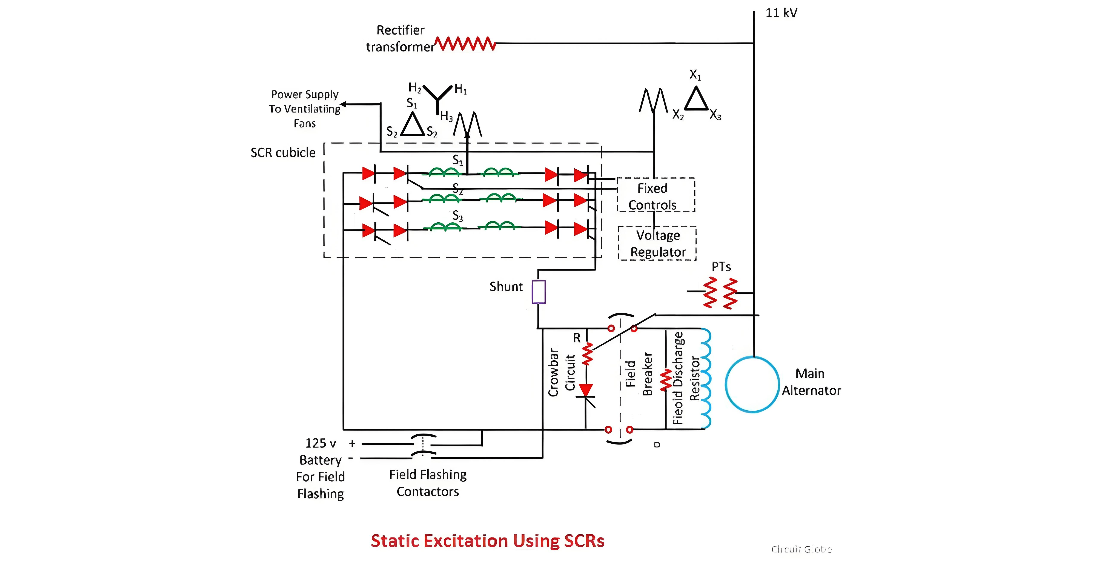
The static excitation system boasts an impressively short response time, enabling it to react swiftly to changes in electrical conditions. This rapid responsiveness, in turn, confers outstanding dynamic performance, allowing the system to maintain stable operation even under fluctuating loads and varying electrical demands.
One of the key advantages of this system lies in its ability to drive down operating costs significantly. By doing away with traditional exciters, it eliminates windage losses—the energy dissipated due to the friction between moving parts and the surrounding air. Additionally, without the need for regular upkeep of exciter windings, maintenance expenses are substantially reduced. These cost - saving features make the static excitation system an economically attractive option for a wide range of applications.
The Electricity Encyclopedia is dedicated to accelerating the dissemination and application of electricity knowledge and adding impetus to the development and innovation of the electricity industry.

